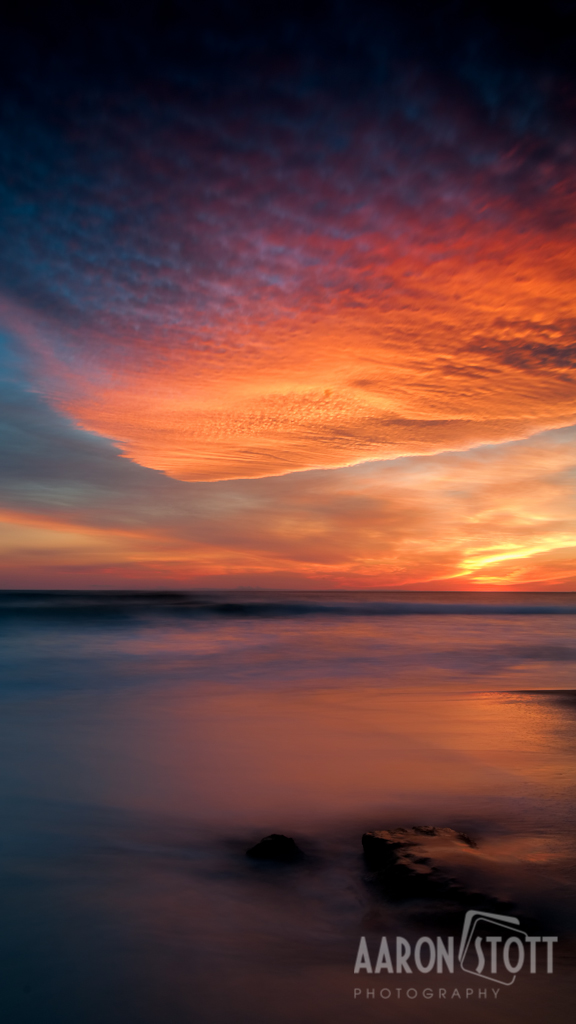Over the last few weeks I have been spending quite a bit of time at Gunnamatta Surf Beach which is located in the Mornington Peninsula National Park (Victoria). The beach is a 3 kilometer long stretch of exposed sandy beach and according to beachsafe.org.au is one of the best surf beaches along the Mornington Peninsula, with consistent 2 m waves all year. It is however a very dangerous beach with Life Saving Victoria making an average of 113 rescues at the beach each year. Going to Gunnamatta at the end of winter means I haven’t had to fight the crowds that flock to the beach in summer and it usually just been myself down there and a few keen fishermen.
There are several spots along the beach where there are some large rocks in the sand which make for some interesting photographs if you are game enough to get close to them. This photo below is of one them and was taken late in the afternoon just prior to sunset; just in case you are wondering I got drenched taking this!
The sunset last Sunday was incredible, the colours were so vivid and constantly changing. As I mentioned at the start the waves are practically constant at Gunnamatta and you need to keep you remain alert and keep your eyes open, I didn’t and it caused the loss of my DA* 16-50 mm, f/2.8 SDM lens. So my next post will be on seascape photography tips that no one else will tell you!
As I mentioned at the start the waves are practically constant at Gunnamatta and you need to keep you remain alert and keep your eyes open, I didn’t and it caused the loss of my DA* 16-50 mm, f/2.8 SDM lens. So my next post will be on seascape photography tips that no one else will tell you!
Join the conversation on Facebook @ facebook.com/aaronstottphotography
or visit my website at www.aaronstottphotography.com.au

























